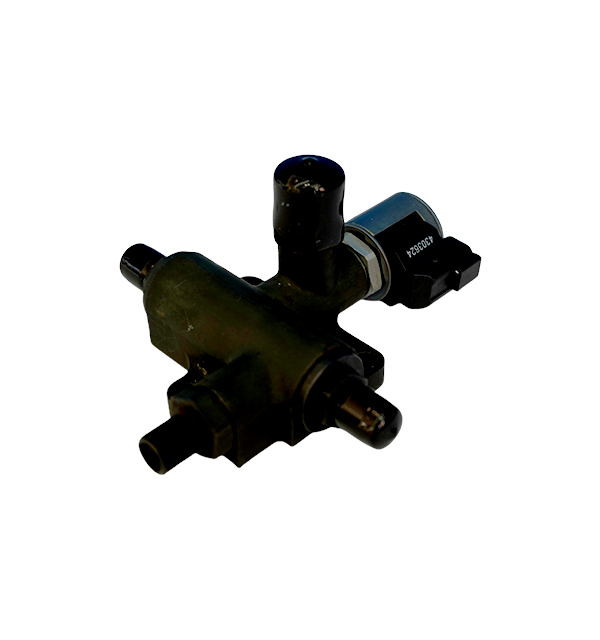Application Scenarios of Pressure Control Valves in Industrial Fields
I. Oil and Gas Industry
Pipeline Pressure Regulation
Natural Gas Transmission: Installed in long-distance pipelines to maintain outlet pressure stability (e.g., regulating from 6.4MPa to 0.8MPa for city gate stations), with pressure control accuracy within ±0.5% of the setpoint.
Oil Field Wellhead Control: Used in oil wellhead chokes to adjust backpressure, optimizing oil production rates while preventing sand erosion, with anti-cavitation trim designs (e.g., tungsten carbide coatings).
Refinery Processes
Distillation Column Pressure Control: Maintains column pressure at 0.1–0.5MPa in crude oil distillation, ensuring stable separation of gasoline, diesel, and other fractions.
Hydrocracking Unit Safety Control: Regulates hydrogen pressure in reactors (5–15MPa) to prevent overpressure, interlocked with emergency shutdown systems (ESD).
II. Chemical and Petrochemical Industry
Reactor Pressure Management
Polymerization Reactors: Controls pressure at 10–35MPa in polyethylene production to regulate molecular weight distribution, with response times ≤1 second for load changes.
Catalytic Cracking Units: Adjusts regenerator pressure to maintain catalyst circulation, reducing carbon deposition and improving conversion efficiency.

Process Safety Systems
Relief Valve Bypass Control: Regulates bypass flow to prevent relief valve chatter in high-pressure systems (e.g., 20MPa ethylene pipelines), with pressure relief accuracy ≤±3% of the setpoint.
Vapor Recovery Units: Controls vent gas pressure in storage tanks (10–50mbar) to minimize volatile organic compound (VOC) emissions, compliant with EPA standards.
III. Power Generation Sector
Steam Turbine Control
Main Steam Pressure Regulation: Maintains steam pressure at 16–25MPa in thermal power plants, adjusting turbine inlet valves to match generator load changes, with regulation precision ≤±0.2MPa.
Feedwater Pressure Control: Controls feedwater pump discharge pressure (18–30MPa) to ensure stable boiler water supply, interlocked with water level control systems.
Hydroelectric Power Applications
Penstock Pressure Regulation: Adjusts water pressure in penstocks (0.5–10MPa) to optimize turbine efficiency, using fast-acting pressure control valves (response time ≤500ms) for load frequency regulation.
IV. Food and Beverage Manufacturing
Process Pressure Control
Pasteurization Systems: Maintains pressure at 0.3–0.5MPa in aseptic filling lines to ensure pasteurization temperature stability (e.g., 135°C for UHT milk), with sanitary design (316L stainless steel, electropolished surfaces).
Fermentation Tanks: Regulates CO₂ pressure (0.1–0.3MPa) in beer fermentation to control alcohol content and carbonation levels.
Clean-in-Place (CIP) Systems
Controls cleaning fluid pressure (0.2–0.4MPa) to ensure uniform spraying of tank interiors, with pressure control valves meeting 3-A Sanitary Standards and FDA 21 CFR 177.2600.
V. Pharmaceutical and Biotechnology
Reactor and Sterilization Equipment
Bioreactor Pressure Control: Maintains sterile pressure (0.1–0.2MPa) in cell culture reactors to prevent contamination, with diaphragm valves made of PTFE-lined 316L stainless steel.
Autoclave Pressure Regulation: Controls steam pressure (0.1–0.2MPa) and temperature (121–134°C) in sterilization processes, ensuring logarithmic reduction of microbial loads (≥6-log kill).
Fluid Management in Drug Production
High-Purity Water Systems: Regulates pressure in ultra-pure water pipelines (0.3–0.6MPa) for pharmaceutical manufacturing, with valves compliant with USP <671> and EP 2.2.47 standards.
VI. Metalworking and Mining
Hydraulic Press Control
Forging Presses: Controls hydraulic pressure (20–100MPa) for metal forming, ensuring consistent forging force and dimensional accuracy of components (e.g., aircraft engine parts).
Mining Equipment: Regulates pressure in hydraulic excavator arms (25–35MPa) to adapt to different geological conditions, with pressure control valves featuring anti-wear coatings (e.g., TiN).
Mineral Processing
Flotation Cell Pressure Control: Maintains air pressure (50–100mbar) in mineral flotation cells to optimize bubble generation, improving ore separation efficiency.
